For some months now, the U.S. has looked exceptional compared to the rest of the world. Better COVID-19 vaccine rollout. Bigger fiscal policy push. Bolder reopening. Economic and market indicators showed this too. Consumption spiked well-above pre-pandemic levels and U.S. yields moved higher in anticipation of normalization. Investors put a huge bet on U.S. equities, with foreign investors accumulating U.S. stocks at unprecedented speed in 2020 and into 2021.
But cracks are forming in the U.S. exceptionalism narrative, and the money flow is at risk of a dramatic reversal.
It is well-known that the economic recovery in the U.S. has been swift, and the debate has even shifted from strong growth towards overheating risk. But what is perhaps less known is how incredibly large the amount of money betting on a strong U.S. economic recovery has been.
Exceptionalism in money flow
The chart below shows foreign net equity inflow into the U.S. since 2000 based on balance of payment data. For several quarters, the U.S. attracted historically large equity inflows, with net foreign inflows of more than $400 billion in 2020.
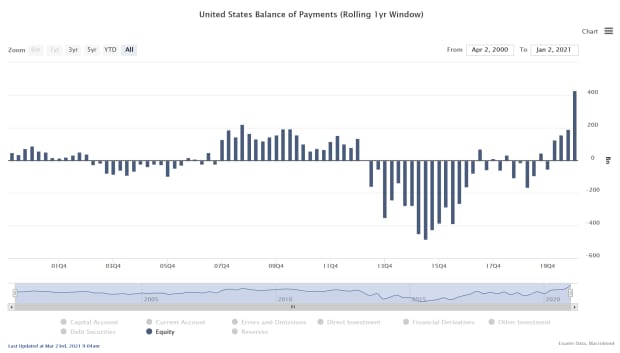
The next chart shows the balance of payments data broken down into inflows (liabilities) and outflows (assets). It highlights that the inflows were the driving force of the large net numbers and that they accelerated during 2020.
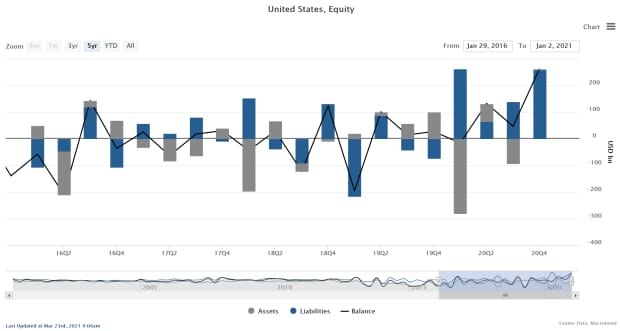
The foreign inflows in the fourth quarter of 2020 alone were >$250bn (>$1 trillion annualized) and in the region 5% of GDP. Even during the 1999-2001 dotcom bubble, we did not see many quarters above 2% of GDP.
U.S. exceptionalism also is illustrated in this next chart, which shows U.S. “market share” in total global cross-border equity flows. The U.S. has indeed been exceptional, grabbing close to all of the world’s recent gross-flow (some flows to specific countries can be negative).
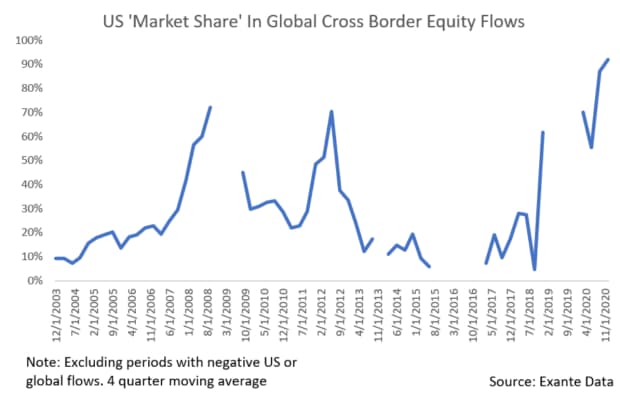
Exceptionalism is now in question
Enough about the past. Where do investors stand now, and where are we heading? Many pieces of evidence show that investors are questioning the exceptionalism narrative and changing the direction of money flow:
First, the latest official monthly data (the March TIC data) shows that foreign appetite for U.S. stocks is potentially waning in an important way. The strong momentum from 2020 continued into January and February 2021. But there was a big reversal in March.
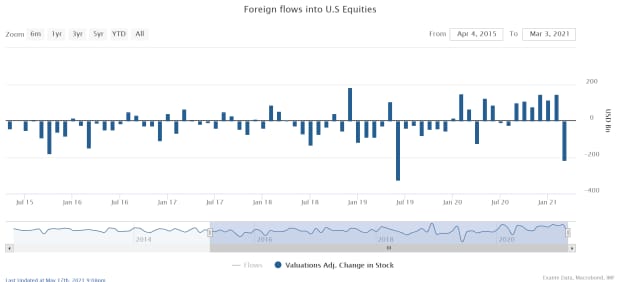
Second, in a way this is all logical, since the rest of the world is catching up with the U.S. on the vaccine front. The chart below shows that the EU began to vaccinate more people (per capita) than the U.S. in May. Recently China has also surpassed the U.S. (and the EU). This means that other countries are quickly catching up in terms of immunity and economic reopening will follow shortly thereafter.

Third, U.S. bond yields, which spiked in the first quarter of 2021, are no longer leading the global move higher in interest rates. The chart below shows how U.S.10-year Treasury
TMUBMUSD10Y,
1.573%
yield rose by 0.8 percentage points in the first quarter (gray bars), much more than European yields. But in the second quarter of 2021 (blue bars) the ranking is totally different. Yields in Europe are rising the most, while U.S. yields are declining.
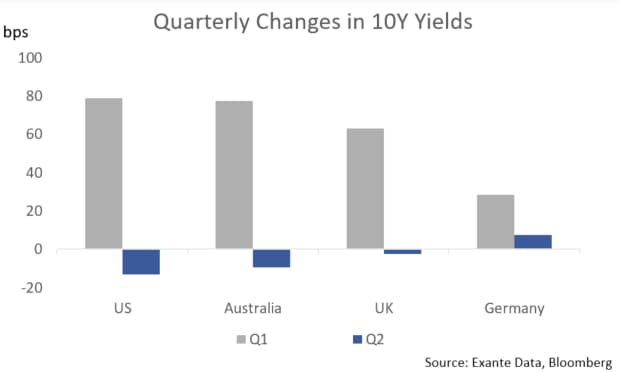
Fourth, relative equity market performance is starting to flip. After a long period of structural U.S. equity market outperformance, U.S. leadership is in question. Relative to Eurostoxx
SXXE,
+0.32%
(the index of the most liquid European stocks), the S&P 500
SPX,
-0.08%
has underperformed since October 2020. This could well have further to run, given valuation differences — and especially if technology stocks are a drag on the U.S. market.
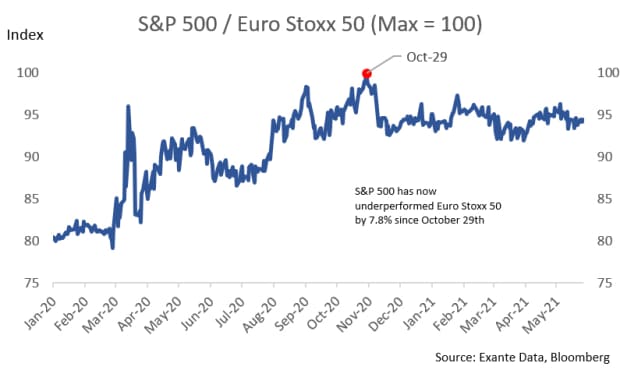
We can already observe a form of divergence between U.S. equity performance (erratic) and the underlying economic performance (still strong). The money flows make that picture more understandable: money flows into the U.S. equity market got so extended that some mean-reversion was inevitable.
Less demand for U.S. equity products has implications for relative U.S. equity performance, and may also impact the U.S. dollar via the overall structure of balance of payment financing. This is a problem in the context of a widening current account deficit.
The U.S. has an exceptional fiscal stance and an exceptional current account position. If financing via equities is becoming less exceptional, something else will have to give.
Jens Nordvig is founder and CEO of Exante Data. Follow @jnordvig and @ExanteData on Twitter.
More: Don’t get too optimistic about a stock market rally — they’ve been fizzling out
Plus: The S&P 500 would be below 1,600 without these 3 pillars and those supports are now weakening


